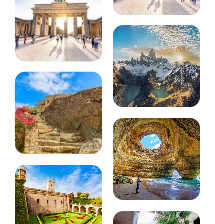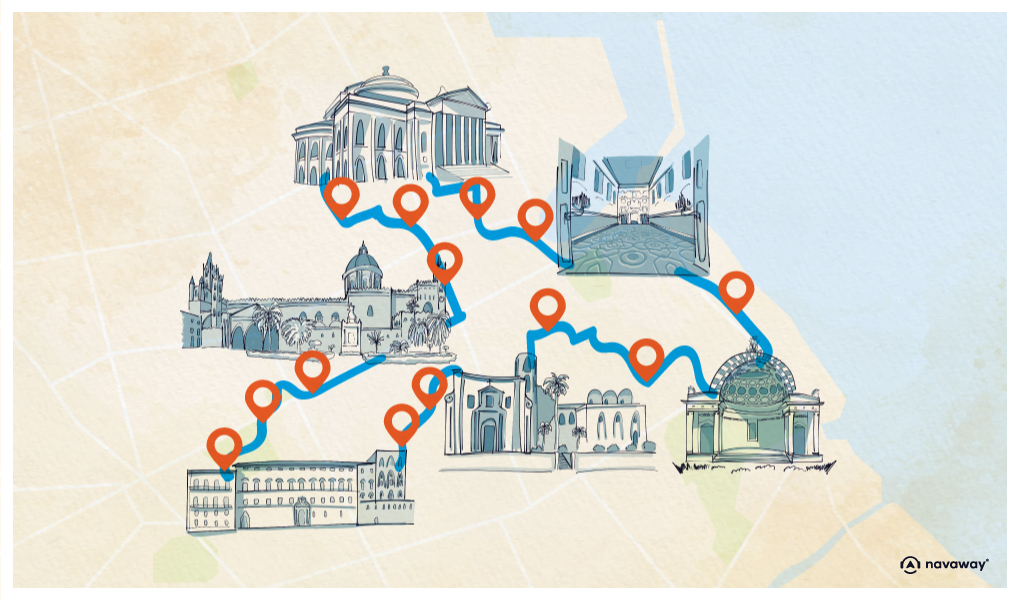
Sicily’s 14 most beautiful villages to discover
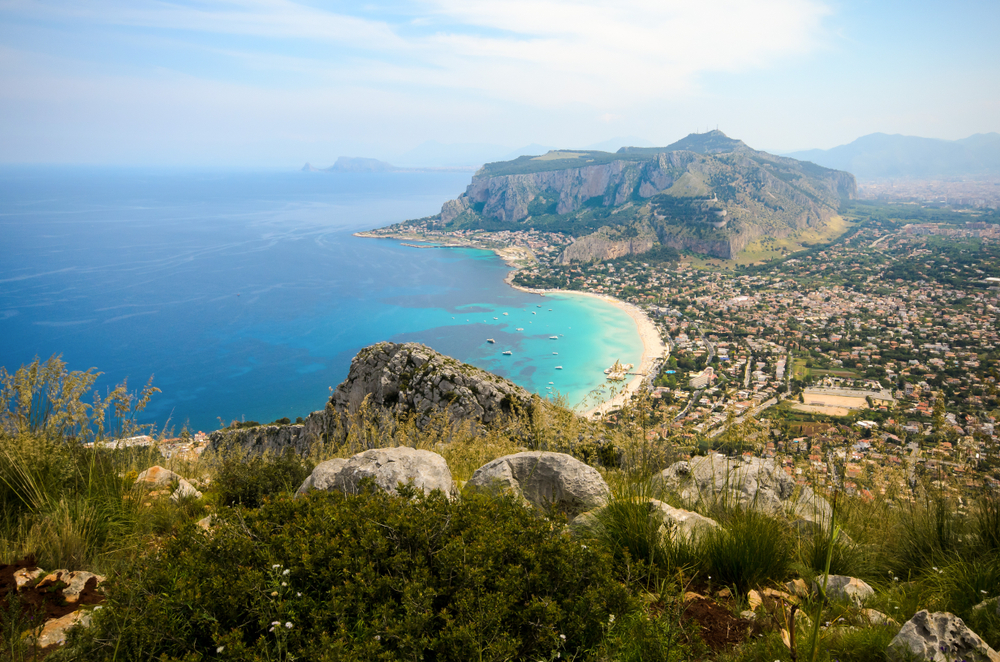
Nestling in the heart of the Mediterranean, Sicily is much more than just its iconic cities. The island hides breathtakingly beautiful villages in its hills and along its coasts, witness to a thousand years of history and a unique way of life. From UNESCO-listed Baroque cities to medieval hilltop villages and charming fishing ports, Sicily’s most beautiful villages rival each other for authentic charm. Whether you’re an architecture enthusiast, a history buff or simply in search of breathtaking panoramas, this selection of the 14 most beautiful villages in Sicily will take you on a journey to discover the hidden treasures of this fascinating island.

Also read the Sicily guide :
- Discover Sicily’s most beautiful beaches
- What to see and do in Sicily
- The best Sicilian culinary specialities
- Discover Selinunte, Sicily’s major archaeological site
- Find out how to get to Sicily from Toulon by Ferry
1. Taormina, the pearl of the Ionian coast

Perched like a balcony suspended between sky and sea, Taormina is undoubtedly one of the most beautiful villages in Sicily. This marvel overlooks the Ionian coast at an altitude of 200 metres, offering spectacular panoramic views of Mount Etna and the Mediterranean. The village’s charm lies in its harmonious architectural mix of medieval streets, Baroque palaces and ancient remains, all elegantly combined.
The ancient Greco-Roman theatre is Taormina’s must-see landmark. Built in the 3rd century BC, this archaeological jewel held up to 10,000 spectators and continues to be used for cultural performances. The view from the stands, with Mount Etna in the background, remains one of the most photographed in Italy.
Corso Umberto, the village’s main thoroughfare, invites you to stroll between craft shops, historic cafés and elegant palazzi. Piazza IX Aprile offers an exceptional natural vantage point, while the villa communale enchants visitors with its lush gardens dotted with sculptures. For beach lovers, Isola Bella, connected to the coast by a narrow strip of sand, is an unspoilt nature reserve with crystal-clear waters.
2. Cefalù, between Norman cathedral and golden beaches
Sixty kilometres from Palermo, Cefalù lies at the foot of an imposing rocky cliff called the Rocca. This medieval village is one of the most beautiful in Sicily, thanks to its harmonious balance between historical heritage and seaside charm. Its golden sandy beaches lined with turquoise waters attract bathers, while its historic centre enchants lovers of architecture.
Cefalù Cathedral, a UNESCO World Heritage Site, majestically dominates the Piazza del Duomo. Built in the 12th century by King Roger II, this divine fortress impresses with its two square towers and magnificent Byzantine mosaics depicting Christ the Pantocrator. The building bears witness to the splendour of Sicilian Arab-Norman art.
The maze of cobbled streets in the historic centre is an invitation to explore. The medieval lavatoio, an ancient public washhouse fed by a natural spring, is a unique curiosity. For the more sporty, the climb to the top of the Rocca rewards the effort with a 360-degree panorama of the village, the sea and the Madonie mountains. It takes around an hour’s walk to reach the ruins of the Temple of Diana and enjoy this exceptional view.
3. Noto, masterpiece of Sicilian Baroque
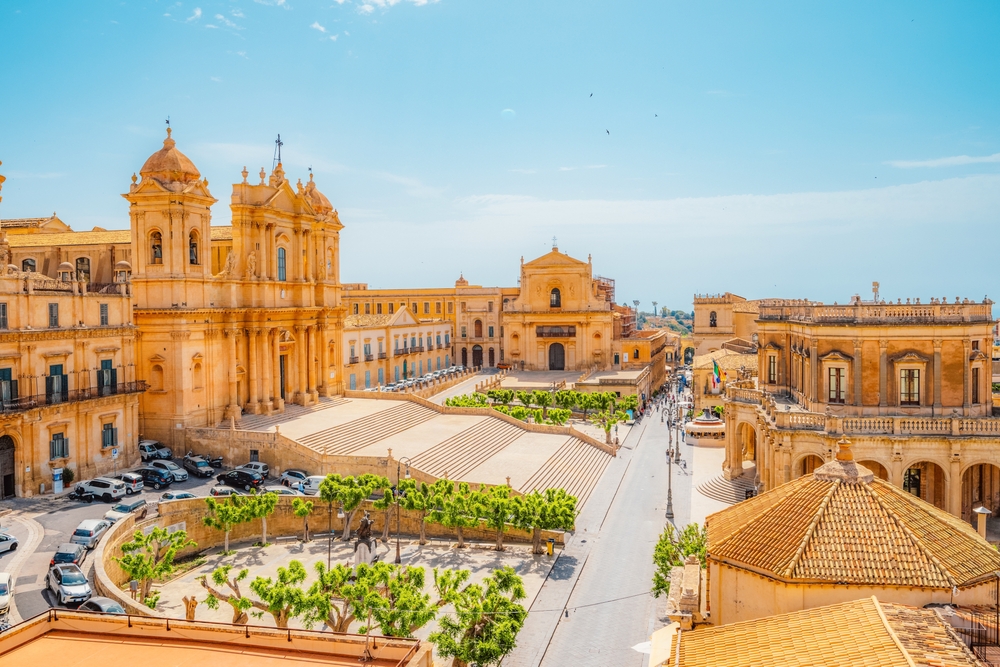
Completely rebuilt after the devastating earthquake of 1693, Noto embodies the apogee of Sicilian Baroque. This open-air museum town, a UNESCO World Heritage Site, dazzles visitors with the harmony of its architecture and the golden colour of its limestone. Considered to be the most beautiful stone garden in Europe, Noto is rightly one of the most beautiful villages in Sicily.
Corso Vittorio Emanuele runs through the historic centre, revealing a succession of aristocratic palaces and sumptuous churches. The majestic Cathedral of San Nicolò, with its wide monumental staircase, dominates the Piazza del Municipio. The Palazzo Nicolaci, with its balconies supported by sculpted mensoloni depicting mermaids, chimeras and mythological creatures, is an example of Baroque genius. Every third weekend in May, the Via Nicolaci is transformed into a gigantic floral work of art during the Infiorata, an ephemeral carpet of petals that attracts thousands of visitors.
The Chiesa di San Domenico, considered to be one of the masterpieces of European Baroque, captivates visitors with its convex façade and luminous interior. If you want to admire the whole of Noto from above, the church of Santa Chiara offers an exceptional panorama of honey-coloured roofs and golden domes from its terrace.
4. Erice, the medieval hilltop village
Perched 750 metres above sea level on Mount Eryx, Erice overlooks the city of Trapani and the Mediterranean. This perfectly preserved medieval village, accessible by a spectacular cable car or a winding road, offers a plunge back in time. Its ramparts, cobbled streets and ancient churches give Erice a unique atmosphere, often shrouded in a mysterious mist that adds to its legendary charm.
The Porta Trapani marks the main entrance to the fortified village. The maze of narrow streets, lined with stone houses, leads to quiet squares and craftsmen carrying on traditions. The Castello di Venere, built by the Normans on the remains of an ancient temple dedicated to Venus, crowns the top of the village. The surrounding Balio gardens offer breathtaking views of Trapani, the saltworks and the Aegean islands.
Erice has also forged a remarkable culinary reputation. The Maria Grammatico patisseries offer delicious genovesi and cassatelle, perpetuating centuries-old convent recipes. In summer, the village comes alive with classical and medieval music concerts in the enchanting setting of the castle and its gardens.
5. Ragusa Ibla, the baroque jewel of the Iblei mountains
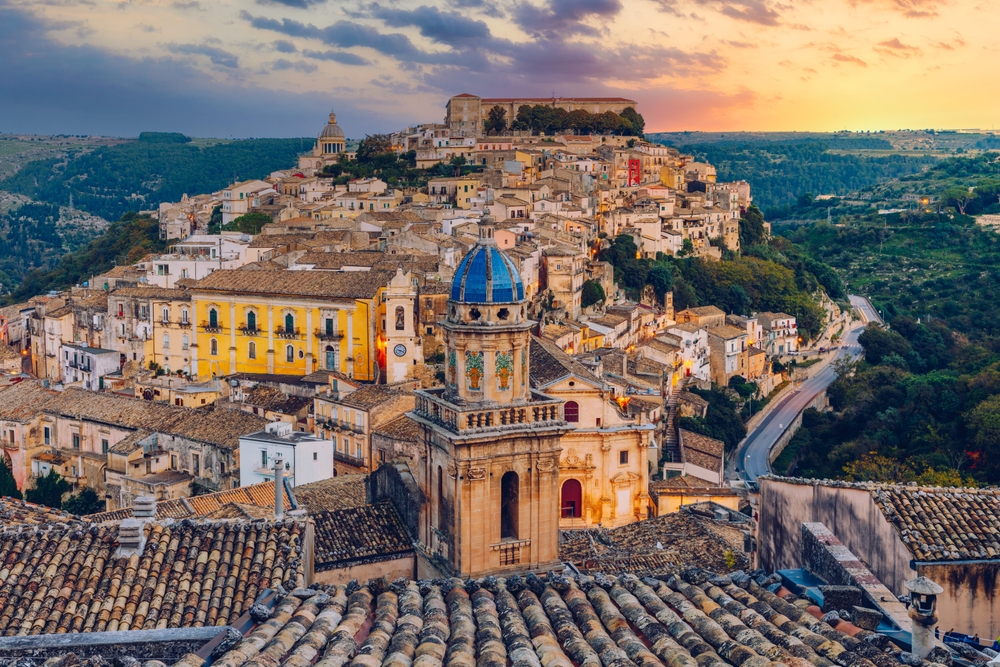
Ragusa Ibla, Ragusa’s historic quarter, is a Baroque treasure nestling in the heart of the Iblei mountains. This ancient part of the city, rebuilt after the earthquake of 1693, is a labyrinth of winding streets, staircases and squares adorned with sumptuous churches. Listed as a UNESCO World Heritage Site, Ragusa Ibla perfectly embodies the architectural genius of late Sicilian Baroque.
The Cathedral of San Giorgio, a masterpiece by Rosario Gagliardi, dominates the Piazza Duomo. Its three-tiered convex façade and neoclassical dome illustrate the stylistic evolution of Sicilian Baroque. The Giardino Ibleo, a public garden laid out in the 19th century, offers a peaceful haven of greenery overlooking the Irminio valley. The garden’s three churches, including San Giacomo, add a spiritual touch to this bucolic stroll.
Ragusa Ibla gained international fame thanks to the TV series “Il Commissario Montalbano”, filmed in its streets and palaces. Themed tours allow you to relive the scenes of the famous detective. The local gastronomy, with its carob-based specialities and Michelin-starred restaurants, is yet another reason to visit this exceptional village, one of the most beautiful in Sicily.
6. Modica, capital of Baroque chocolate
Modica lies on the slopes of two converging valleys, creating a spectacular urban amphitheatre. Destroyed and then rebuilt after the earthquake of 1693, this town in the Val di Noto is a UNESCO World Heritage Site for its exceptional Baroque ensemble. Modica also stands out for its unique chocolate-making tradition, inherited from Spanish rule, making it a gourmet pilgrimage destination.
The Duomo di San Giorgio, perched at the top of a monumental 250-step staircase, dominates Modica Alta. This Baroque cathedral, the work of Rosario Gagliardi, dazzles with its ornate façade and richly decorated interior. In Modica Bassa, the Cathedral of San Pietro rivals in splendour with its statues of the twelve apostles framing the entrance staircase. The palace of the Counts of Modica and the many Baroque churches punctuate a remarkable architectural promenade.
Modica chocolate, made according to an Aztec recipe introduced by the Spaniards, is distinguished by its grainy texture and intense flavour. Traditional chocolate factories such as Antica Dolceria Bonajuto have been perpetuating this tradition since 1880. The fact that no cocoa butter is added gives this cold-processed chocolate its unique properties, in a wide range of flavours such as cinnamon, chilli pepper and vanilla.
7. Castelmola, the lookout point above Taormina
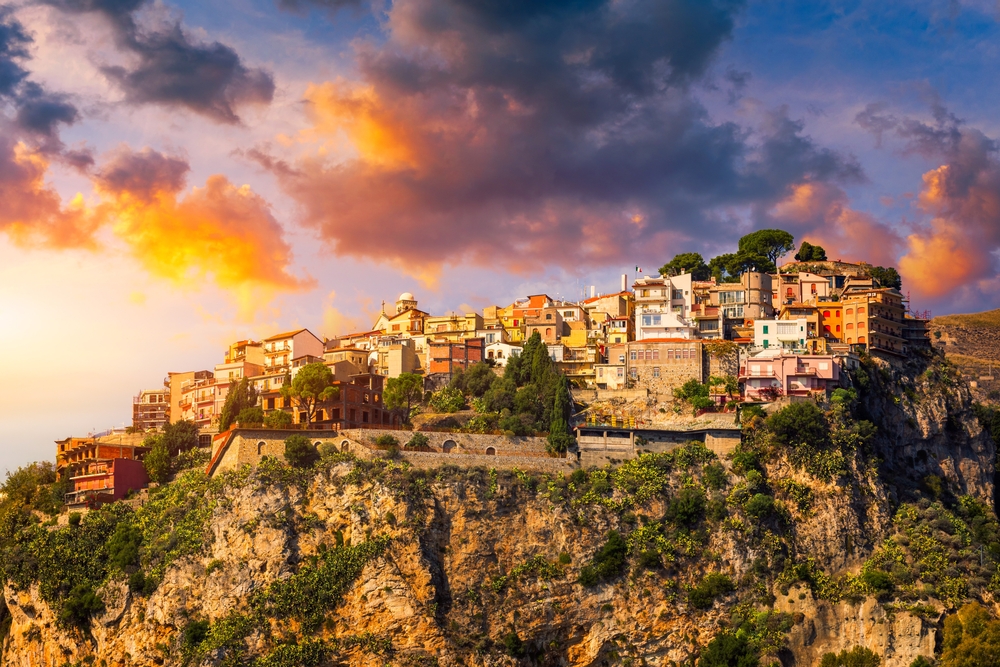
Perched 550 metres above sea level, directly above Taormina, Castelmola offers one of the most spectacular views in Sicily. This small medieval village, accessible via a winding road or a picturesque footpath, retains an authentic, tranquil atmosphere. Its origins date back to pre-Hellenic times, and its name evokes the millstone (mola) shape of the rock on which it is built.
The ruined castle that crowns the summit bears witness to the village’s strategic position over the centuries. From its remains, you can look out over the bay of Giardini-Naxos, Mount Etna and the entire Ionian coast. Piazza Sant’Antonio, the heart of the village, is home to the Duomo and several historic cafés, including the famous Bar Turrisi, renowned for its unusual decorations and homemade almond wine.
The narrow, flower-filled streets of Castelmola invite you to take a peaceful stroll, away from the tourist crowds of nearby Taormina. Local artisans sell lace, ceramics and local produce. A visit to this village is one of the most popular excursions from Taormina, particularly popular in the late afternoon when you can admire the sunset over the sea from the panoramic terraces.
8. Savoca, in the footsteps of the Godfather
Clinging to a hillside in the Peloritani mountains, Savoca has enjoyed international renown ever since Francis Ford Coppola filmed several iconic scenes from The Godfather here in 1971. This authentic medieval village, ranked among the most beautiful in Italy, retains a timeless atmosphere that seduced the director and continues to fascinate visitors from all over the world.
The Bar Vitelli, where Al Pacino proposes to Apollonia in the film, has become a place of cinematic pilgrimage. The owners have piously preserved the photos and props from the film. The church of Santa Lucia, where Michael Corleone’s wedding took place, and the steep streets are regularly used as backdrops for film productions, giving Savoca its nickname of the “Hollywood of Sicily”.
Beyond its cinematic aura, Savoca is worth a visit for its remarkable medieval heritage. The church of San Nicolò is home to precious frescoes, while the Capuchin crypt houses 17th-century mummies in an impressive state of preservation. The ruins of the Norman castle offer magnificent views over the valley and the Ionian Sea. The nearby village of Forza d’Agrò, also used in the filming of The Godfather, is the perfect complement to a day trip in the footsteps of the famous film.
9. Scicli, the baroque pearl of the Val di Noto
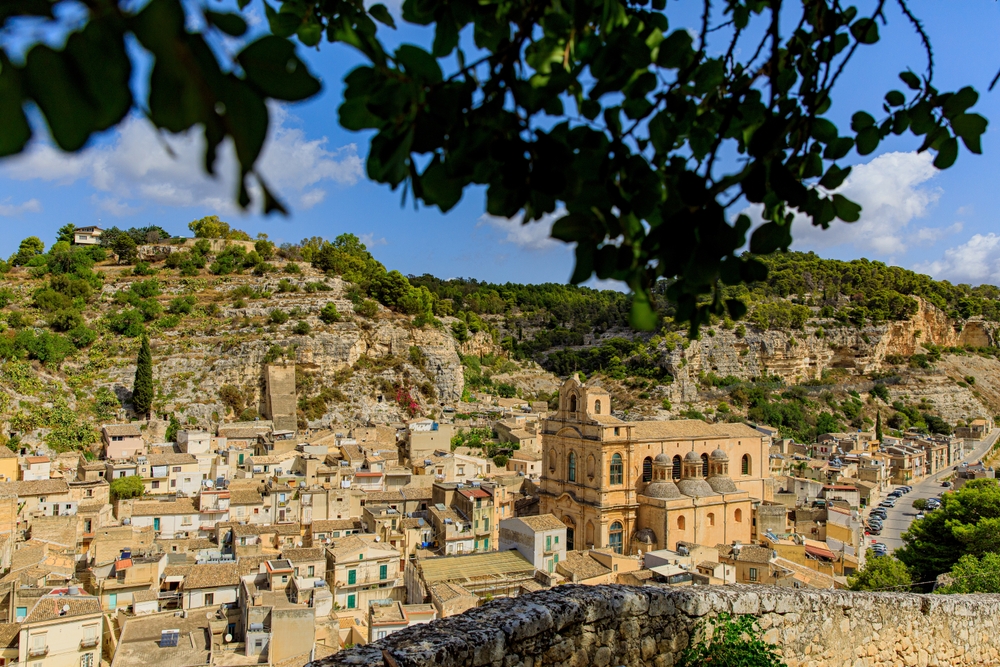
Nestling at the confluence of three valleys, Scicli displays its Baroque heritage in a spectacular natural setting. This town in the Val di Noto, a UNESCO World Heritage Site, has an unspoilt authenticity and a peaceful atmosphere. Less touristy than its neighbours Ragusa and Modica, Scicli reveals a concentration of Baroque architecture and living traditions that make it one of the most beautiful villages in Sicily.
Via Francesco Mormino Penna runs through the historic centre, lined with aristocratic palaces with carved balconies and sumptuous churches. The Chiesa di San Bartolomeo, built into the rocky bed of an ancient torrent, features a convex Baroque façade characteristic of the Sicilian style. The church of San Giovanni Evangelista, rebuilt after the earthquake of 1693, dominates Piazza Italia with its imposing façade. The Palazzo Beneventano, with its grimacing mascarons adorning the balconies, illustrates the most exuberant Baroque style.
Scicli gained new notoriety thanks to the series “Il Commissario Montalbano”, whose fictional police station in Vigata is located in the baroque town hall. The troglodyte district of Chiafura, carved out of the limestone cliffs, bears witness to a way of life that goes back thousands of years. These cave dwellings, inhabited until the 1960s, are the subject of a restoration project and offer a unique testimony to Sicilian vernacular architecture.
10. Marzamemi, an authentic fishing village
On the south-east coast of Sicily, Marzamemi embodies the Mediterranean charm of an authentic fishing village. This small seaside town, whose name derives from the Arabic “Marsà al-hamām” (Bay of Turtles), revolves around its picturesque central square lined with low houses with colourful facades. The old tonnara, a disused tuna factory, bears witness to the village’s glorious fishing past.
Piazza Regina Margherita forms the beating heart of Marzamemi, surrounded by fish restaurants and bars where you can linger in the evening. The church of San Francesco di Paola, the Palazzo del Principe di Villadorata and the buildings of the old tonnara create a harmonious architectural whole. The narrow streets that radiate out from the square invite you to discover craftsmen, shops selling local produce and art galleries.
The beaches of Marzamemi, with their crystal-clear waters, are among the most beautiful in southern Sicily. The beaches of Spinazza and San Lorenzo offer fine sand and unspoilt seabed. In August, the village comes alive with the Marzamemi International Film Festival, which screens open-air films in the main square. The local gastronomy, centred on tuna and seafood, has made the village’s trattorias one of the most beautiful in Sicily.
11. Scopello, between tonnara and the Zingaro reserve

Scopello, a small hamlet in the municipality of Castellammare del Golfo, has a discreet, authentic charm. This coastal village, dominated by a medieval tower, captivates visitors with its peace and quiet and its proximity to the Zingaro nature reserve. Its tonnara, one of the oldest and best preserved in Sicily, opens onto a spectacular cove dotted with faraglioni, rocky peaks rising out of the turquoise waters.
The village of Scopello consists of just a few houses grouped around a baglio, a traditional Sicilian courtyard. This cobbled square is home to an ancient well, craft shops and a bakery renowned for its Sicilian bread. The peaceful atmosphere contrasts with the bustle of summer in Scopello Tonnara, where bathers flock to enjoy the crystal-clear sea in a picture-postcard setting.
The Zingaro nature reserve, Sicily’s first marine reserve created in 1981, begins just a few kilometres from Scopello. Its seven kilometres of unspoilt coastline offer deserted coves accessible only on foot, lush Mediterranean flora and panoramic hiking trails. The Grotta dell’Uzzo, a Palaeolithic archaeological site, and the Museum of Peasant Civilisation are also worth a visit to this protected area. Scopello is the ideal base from which to explore this natural gem, one of Sicily’s most beautiful villages.
12. Sperlinga, the castle in the rock
Isolated in the Sicilian hinterland between Nicosia and Gangi, Sperlinga fascinates visitors with its unique castle-fortress, carved entirely out of a rocky spur. This village in the Nebrodi mountains retains an authentic medieval atmosphere and is a remarkable example of Sicilian cave architecture. Its name, derived from the Latin “spelunca” (cave), perfectly evokes this troglodyte feature.
Sperlinga Castle, built between the twelfth and thirteenth centuries, features rooms, staircases and living quarters carved directly into the stone. During the Sicilian Vespers of 1282, it was the only castle in Sicily to resist the Sicilian insurgents, hosting the French garrison for a year, hence the Latin inscription engraved at the entrance: “Quod Siculis placuit sola Sperlinga negavit” (What the Sicilians liked, only Sperlinga refused). From the summit, the panorama takes in the surrounding mountains and the village below.
The historic centre of Sperlinga is home to many troglodyte houses that were inhabited until recently. The ethnographic museum, housed in converted caves, recreates traditional daily life with farming tools, period furniture and scenes of ancient trades. In August, the Sagra del Tortone celebrates the local culinary speciality, a type of Sicilian polenta, in a festive atmosphere that enlivens the cobbled streets of this timeless village.
13. San Marco d’Alunzio, pearl of the Nebrodi mountains
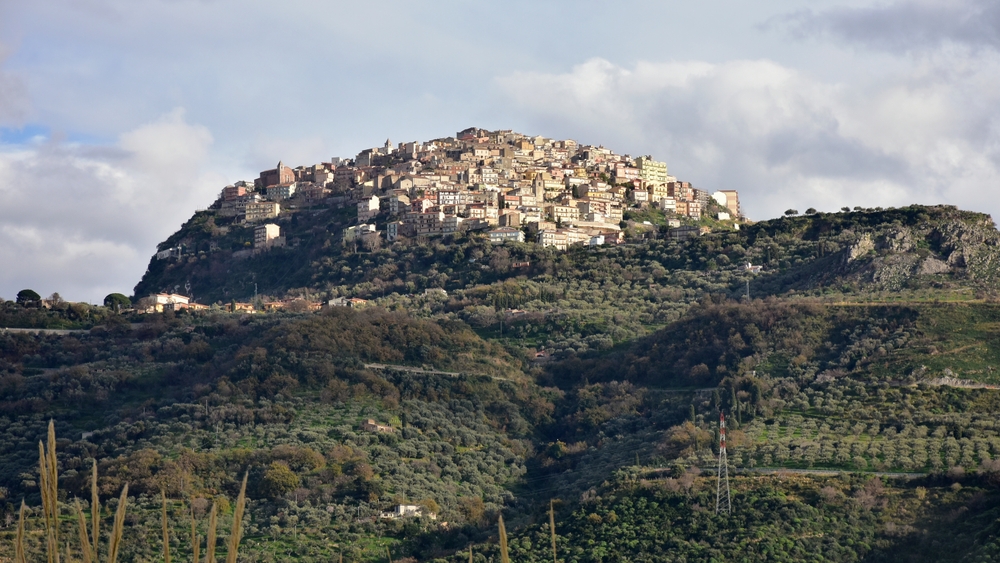
Perched 540 metres above sea level in the Nebrodi mountains, San Marco d’Alunzio overlooks the Gulf of Patti and the Aeolian Islands. This remarkably well-preserved medieval village boasts an exceptional architectural heritage, with no fewer than twenty-two churches and chapels for just two thousand inhabitants. Its thousand-year-old history can be seen in the Greek, Roman, Byzantine, Arab and Norman remains dotting its cobbled streets.
The Greek temple of Hercules, dating from the 4th century BC, transformed into a Christian church and then a mosque before becoming a church again, illustrates the historical layers of San Marco. The Norman castle, of which imposing remains remain, offers a natural viewpoint over the Tyrrhenian Sea. The church of Santa Maria delle Grazie houses a magnificent fifteenth-century Byzantine crucifix, while the Benedictine convent and the chiesa di San Teodoro bear witness to the religious influence of the village.
San Marco d’Alunzio also boasts a centuries-old tradition of crafting the local red marble, “rosso San Marco”, which has been quarried since ancient times. The Nebrodi Museum of Folk Culture and Traditions, housed in the former Benedictine convent, recreates the trades and daily life of this mountainous region. The village’s relative isolation has preserved its authenticity, making San Marco one of the most beautiful villages in Sicily for lovers of heritage and tranquillity.
14. Monreale, a jewel box of golden mosaics
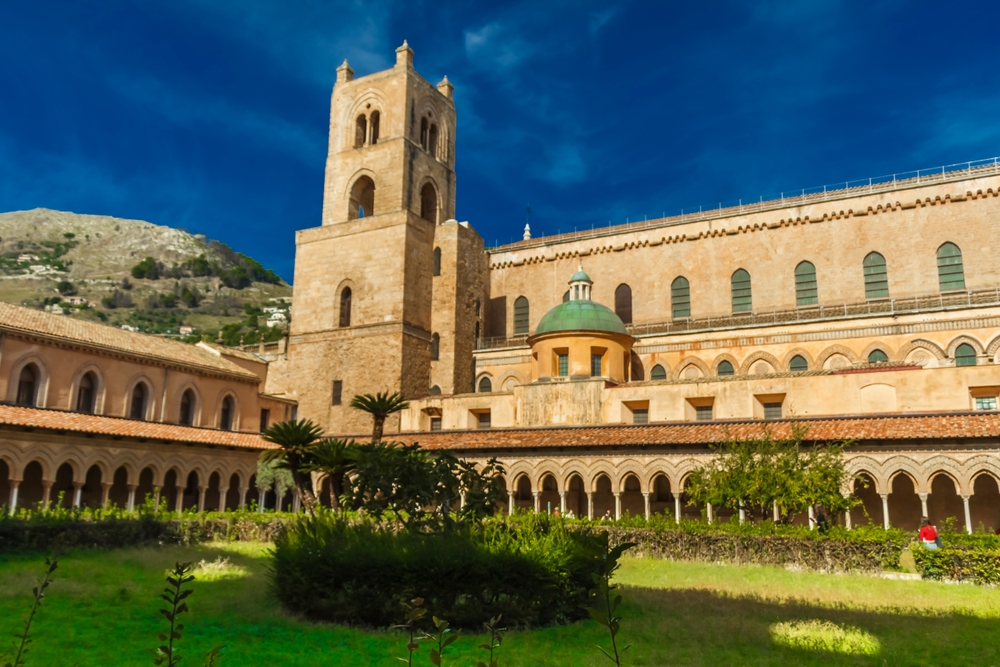
Dominating Palermo from the foothills of Monte Caputo, Monreale owes its fame to the extraordinary Arab-Norman cathedral built by William II in the 12th century. The village that grew up around this UNESCO World Heritage-listed architectural gem also offers exceptional panoramic views over the Conca d’Oro, the fertile plain that surrounds Palermo.
The Cathedral of Santa Maria Nuova dazzles with its 6,400 square metres of Byzantine mosaics on a gold background, the largest in Italy after Saint Mark’s in Venice. The Christ Pantocrator in the apse and the scenes from the Old and New Testaments visually narrate the Bible with incomparable iconographic richness. The adjoining cloister, with its 228 twin columns adorned with unique sculpted capitals, is a masterpiece of Sicilian Romanesque art. The terrace on the roof of the cathedral offers a splendid view of Palermo and the sea.
The historic centre of Monreale, often overlooked in favour of the cathedral, is well worth exploring. The Belvedere, with its panoramic terrace, offers the most photographed view of the Conca d’Oro. The narrow streets of the medieval quarter are lined with aristocratic palaces and Baroque churches. The local gastronomy, in particular the almond and pistachio pastries, perpetuates Sicilian traditions. A visit to Monreale is an ideal way to combine with a visit to nearby Palermo, rounding off your discovery of Sicily’s most beautiful villages.
In conclusion, Sicily’s most beautiful villages reveal the richness and diversity of this extraordinary Mediterranean island. From Taormina, perched high above Mount Etna, to the UNESCO-listed Baroque villages of the Val di Noto, medieval villages such as Erice and authentic fishing ports such as Marzamemi, each Sicilian village tells its own unique story. These architectural and natural gems invite you to get off the beaten track, to take the time to stroll through alleys steeped in history and to soak up the Sicilian art of living. Whether you’re a fan of Baroque architecture, a lover of breathtaking panoramas, a film buff following in the footsteps of The Godfather or simply in search of Mediterranean authenticity, Sicily’s villages will win you over with their timeless charm and legendary hospitality. Let yourself be guided as you explore these island treasures for an unforgettable Sicilian experience.
FAQ : The most beautiful villages in Sicily
Which is the most beautiful village in Sicily?
Taormina is generally considered the most beautiful village in Sicily, thanks to its spectacular location overlooking the Ionian Sea, its ancient Greek theatre and its panoramic views of Mount Etna. However, Cefalù, Noto and Ragusa Ibla rival each other in beauty with their remarkable architecture and unique atmospheres.
When is the best time to visit the Sicilian villages?
Spring (April-May) and autumn (September-October) are the ideal times to visit Sicily’s most beautiful villages. Temperatures are pleasant, tourist numbers are lower and the villages reveal their most beautiful colours. Summer can be very hot and crowded, especially in Taormina and Cefalù.
How long does it take to visit the Baroque villages of the Val di Noto?
To discover the main Baroque villages of the Val di Noto (Noto, Ragusa Ibla, Modica and Scicli), you need at least 3 to 4 days. Each village deserves half a day to a full day to fully appreciate its architecture, atmosphere and gastronomy without rushing.
Can you visit these villages without a car?
A car is highly recommended if you want to visit Sicily’s most beautiful villages in complete freedom, especially those inland such as Erice, Sperlinga and San Marco d’Alunzio. However, Taormina, Cefalù and the villages of the Val di Noto can be reached by bus or train from the main Sicilian cities, although timetables can be restrictive.
Where to stay to visit the Sicilian villages?
If you want to get around efficiently, choose strategic bases: Taormina or Giardini Naxos in the east, Ragusa or Modica in the Val di Noto, Trapani in the west and Palermo in the north. Sleeping directly in the villages offers a more authentic immersion, with the advantage of enjoying the peaceful atmosphere in the evenings and early mornings.
200 audioguided tours for cities all around the world
Download